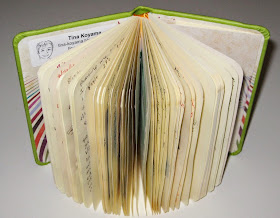 |
| My travel journal in Brazil was a Rhodia Rhodiarama notebook. |
When I’m home, I keep an ongoing journal/log book using an A5 (about 5 ½” x 8 ½”) size Leuchtturm notebook. But when I do any major traveling (longer in duration than a few
days), I switch to a pocket-size format. Aside from the practical matter of a
smaller size being easier and lighter to carry, I also like keeping a separate,
independent journal for each trip.
Unlike my sketchbook, this little notebook is used
mainly for writing (a useful pastime while riding trains in Japan and Europe)
and gluing in ticket stubs, chopstick wrappers (Japan), beer coasters (Germany)
and other thin ephemera. Before I became a sketcher, I used to bring along a POGO portable printer and stick in small
self-adhesive prints of select photos as a visual token of the day. (Sometimes
I miss that little printer, but when you do carry-on baggage only, something has
to go. Besides, now if I want a visual token of the day, I just sketch it.)
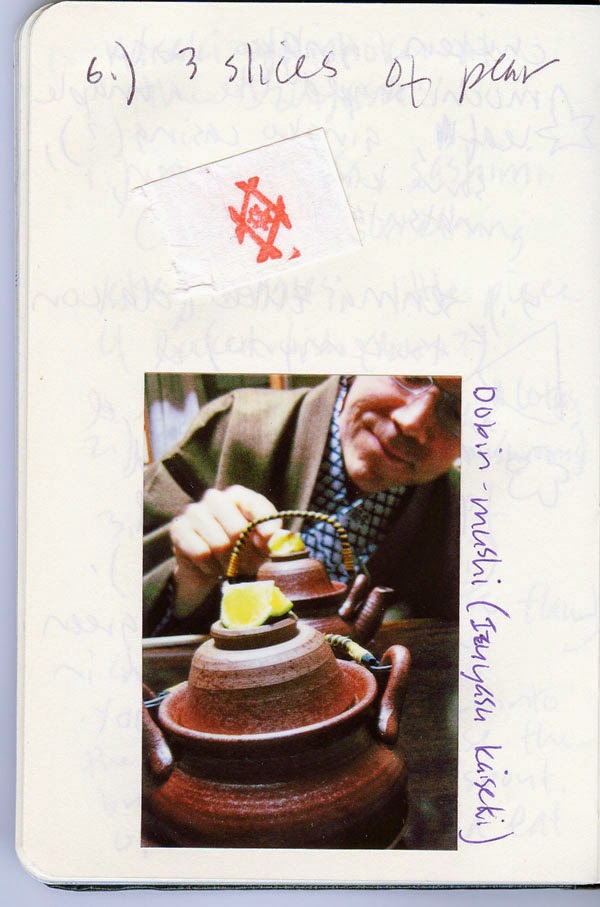 |
A travel journal page from my 2010 trip
to Japan. I used a Pogo printer to capture
favorite images. |
I like to begin the travel notebook as soon as I commit to
taking the trip because I want to document the whole process, not just the trip
itself: the date I began applying for a visa; the purchase date and price of my
airfare; the currency exchange rate. It’s also where I write key vocabulary
words and phrases in the language of the country I’m visiting that I need to
learn; the addresses of hotels we’re staying in (so I don’t have to dig that
out of my carry-on bag when we’re sleep-deprived and bleary-eyed at the
airport); our list of must-see sights. In other words, it becomes both a
personal travel journal and a reference.
When I wasn’t sketching yet, the type of paper wasn’t very
important, so I most often used a Moleskine or other similar hardcover pocket-size notebook. Last year I took a Pen & Ink notebook to Europe. It
has smooth, heavy paper (similar to Moleskine’s manila-folder-like “sketchbook” paper) that I enjoyed writing on, but the
binding started falling apart before the two-week trip was over.
 |
7/10/13 ballpoint pen, Pen & Ink notebook (An attempt at
reportage sketching on Barcelona's La Rambla.) |
This year for our trip to Brazil, I gave a lot more consideration to the notebook itself than
I usually do. I recalled a time in Barcelona last year when we were walking to
dinner, and we ran into a commotion on La Rambla. I couldn’t read the signs that people were carrying, but I got the
impression that it was some kind of protest. Since we were only going to
dinner, I had left my sketchbook and supplies at the hotel. (HA! I’d never make
that mistake again!) I couldn’t let this first-ever opportunity for sketch
reportage slip away! I quickly pulled out my travel journal notebook and a Bic
ballpoint from my purse and sketched. I never did find out what the protest was
about, and the sketch didn’t convey much. But the significant thing was that I
realized the importance of always – always
– having something in one’s possession to sketch on, even if only going to
dinner.
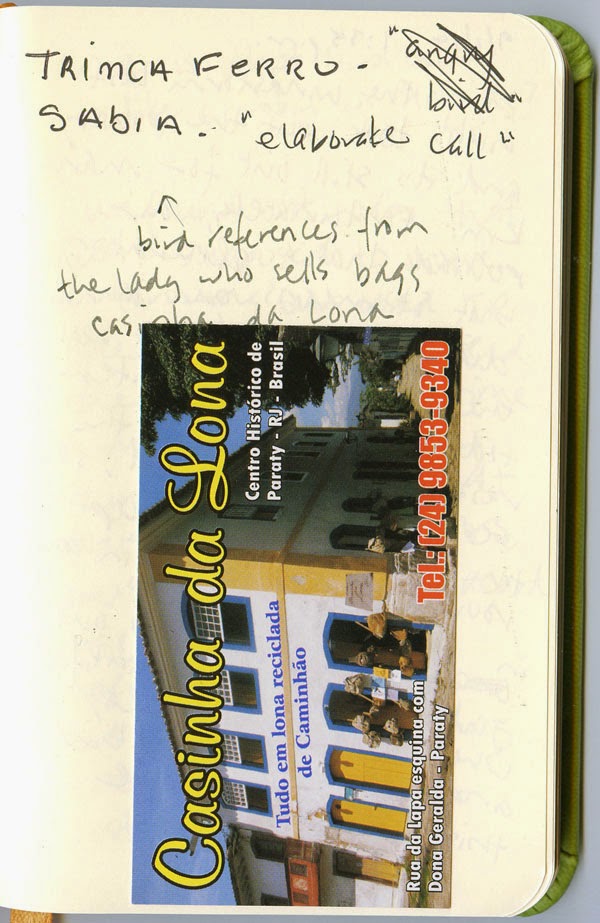 |
A typical page from my Brazil journal:
Notes from a conversation I had with a
local shopkeeper about birds in Paraty. |
With that incident in mind, I set out to find a pocket-sized
notebook that would be good for writing but could also take a sketch or two in
a pinch. I’ve already tried quite a few commercial notebooks that I had hoped
would fill this bill; my continual disappointment is what led me to make my own. For example, Moleskine’s pocket-size watercolor sketchbook is the right size and weight, but I hate writing on
landscape-format pages, and I also prefer a smooth, nontoothy paper for
writing. Moleskine’s standard notebook paper (and that of most competitors) is too
thin and could never take even a light water-soluble ink wash. Moleskine’s
so-called “sketchbook” paper (the yellowish manila type) is substantially thick
(nice for collage), but I hate its waxy surface for sketching.
I considered briefly making my own, but I didn’t think a
handbound book with enough pages to last two weeks (I write a fair amount when
traveling) would hold up well to daily-carry and general travel abuse.
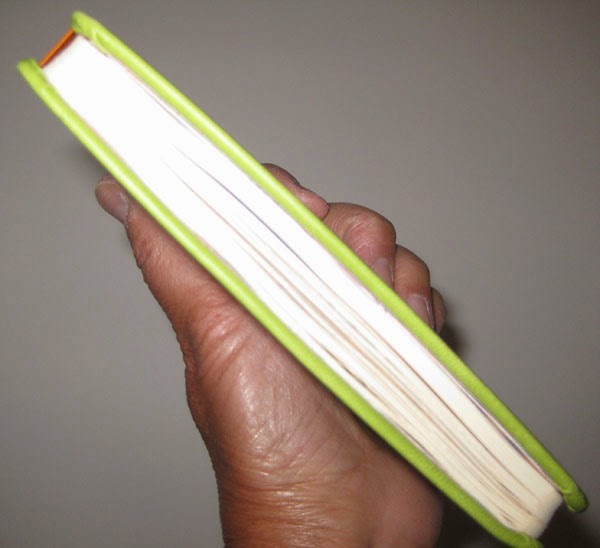 |
The Rhodia pocket notebook is slightly
thicker than most notebooks in this format. |
The one commercial notebook I hadn’t yet tried was the Rhodia. Much lauded by fountain pen
users for its smooth, non-bleed-through paper, it’s more expensive than
Moleskine and most other brands, and its thicker (albeit higher quality) covers
and paper make it bulkier and heavier than Moleskines. (It’s about
three-quarters of an inch thick compared to Moleskine’s half inch.) With 192
pages (96 sheets), it also has more pages than I would normally use in two
weeks.
I bought one and gave it a quick water-soluble ink wash
test, and the paper held up acceptably. Doubtful, I tried watercolor on it,
too. It held up OK to the light wash, but the surface gave a flat, unpleasing
look to the color, and the ivory tint isn’t very flattering to watercolor.
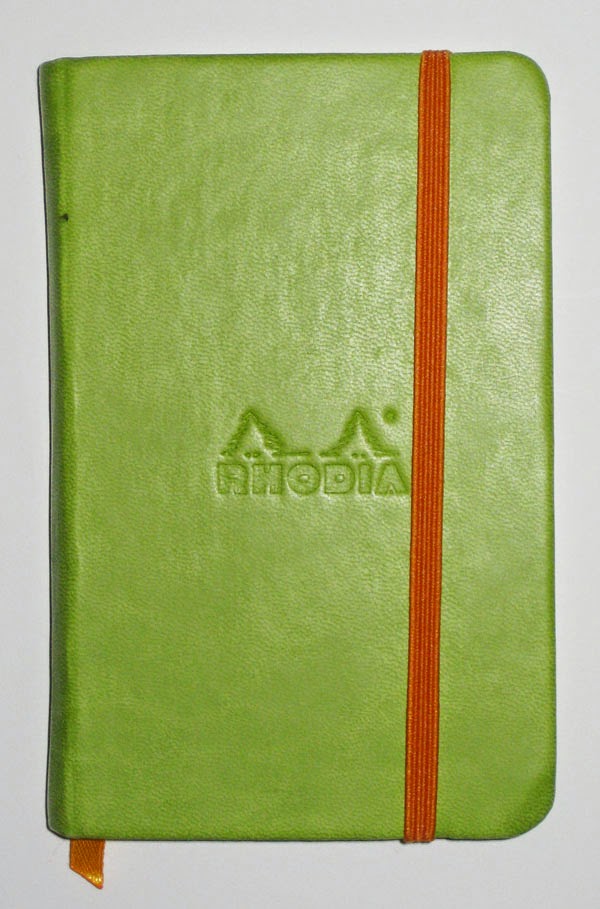 |
The cover feels lovely
and comes in bright, rich
colors. |
Esthetically, the Rhodia’s cover and paper both feel wonderful
to the touch, and the Rhodiarama series comes in a wide range of bright colors
that appeal to me. But the Rhodia would definitely be a tradeoff of slim size
for superior paper. I waffled quite a bit – my goal was to get my bag down to
the lightest possible weight, and realistically, how often would I be sketching
in my travel notebook, anyway? – but ultimately, the Rhodia won.
And what a winner it is! First of all, the binding stayed
strong, and I believe it could withstand months of daily-carry (though I’ll
probably never test that myself; my travel endurance is about two weeks). The
paper is a dream to use with fountain pen, cheap hotel ballpoint pen, pencil, rollerball,
gel pen, you name it. Although I didn’t fill it, I ended up using more than
two-thirds of it (maybe I’m getting more verbose).
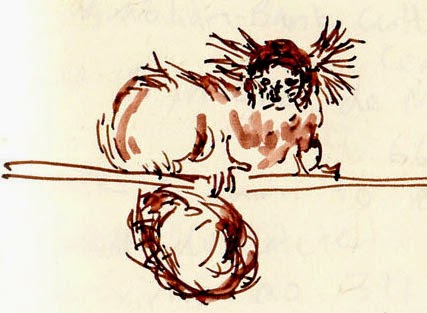 |
| A monkey captured in my Rhodia notebook. |
The most important thing, though, is that it met my
sketching needs at exactly the right moments. You already saw this sketch of the tiny monkey I had the luck to be
able to draw on my way up to the top of Sugarloaf. I had my Stefano with me at
the time, so I could have used it, but I was afraid that the commotion I would
have to make to dig it out would spook the little guy away. (It was a gosling moment!) It was much
easier, faster and quieter to slip the Rhodia out. (In fact, the monkey seemed
fearless and hung around for quite a while.)
 |
8/23/14 Diamine Chocolate Brown and
Private Reserve Velvet Black inks,
Rhodia notebook |
Another example was on the outbound flight – the long,
overnight leg between Atlanta and Rio. After a night of fitful dozing, I woke
early when most other passengers were still asleep, including Greg. Bored, I
wanted to sketch, but getting out my sketchbook would have meant digging around
in my backpack, which was under the seat. Not wanting to wake Greg with my
commotion, I simply pulled out the Rhodia, which was in the passport case
around my neck, and entertained myself by sketching sleeping passengers in the
near-dark.
Would I consider using a Rhodia as my everyday catch-all
sketchbook instead of a handbound sketchbooklet? After all, although the
Rhodia’s paper isn’t as good as the 100-pound watercolor paper I use in my
sketchbooklets, the type of sketches I end up doing in a sketchbooklet tend to
be of bus commuters when I want to be surreptitious, so I wouldn’t haul out
watercolors anyway. But the Rhodia’s biggest drawback is its bulk, which is
about three or four times the thickness of a sketchbooklet. Still, it’s worth
considering. And it’s definitely my notebook of choice when I travel.
 |
9/2/14 Private Reserve Velvet Black ink, Rhodia notebook (a napping dog at
the Paraty bus station) |











































